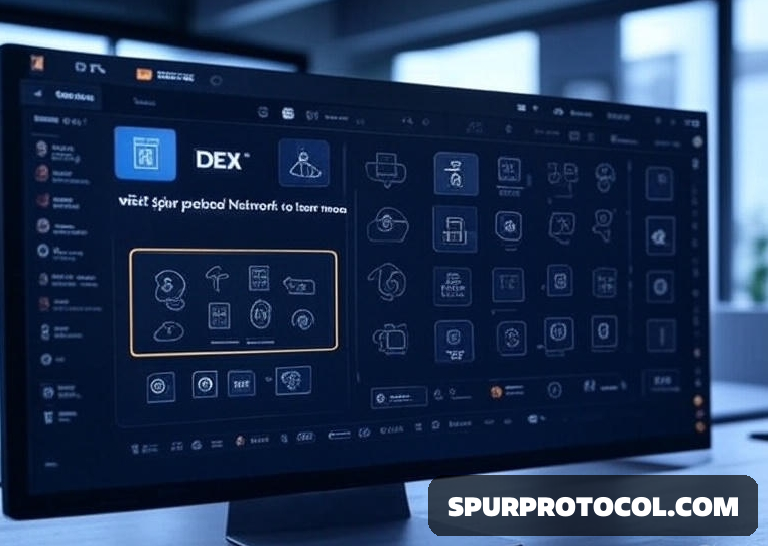From blockchain protocols to decentralized finance (DeFi) platforms, fostering engagement requires systems that reward involvement and enable seamless interactions. Two key mechanisms—token swaps and incentives—are central to this. Token swaps, facilitated by decentralized exchanges (DEXs), allow users to trade assets without intermediaries, democratizing financial access. Incentives, such as token rewards and loyalty programs, motivate users to stake, provide liquidity, and govern ecosystems. Together, they create a powerful synergy that boosts adoption, enhances network security, and builds vibrant communities. As Web3 evolves into 2025, these elements are pivotal in shifting from hype-driven growth to sustainable, user-centric models.
Understanding Token Swaps in Web3
Token swaps are the backbone of DeFi, enabling users to exchange cryptocurrencies directly on-chain without centralized exchanges. Powered by automated market makers (AMMs) like Uniswap or SushiSwap, swaps rely on liquidity pools where users deposit token pairs to facilitate trades. This permissionless system lowers barriers, allowing anyone with a wallet to participate and fostering inclusivity in global finance.
Swaps enhance Web3 participation by making economic activities accessible and efficient. In-wallet token swaps and fiat on-ramps simplify user onboarding, encouraging frequent interactions. By reducing friction, swaps turn passive holders into active traders, increasing transaction volumes and network vitality. However, swaps require sufficient liquidity to avoid high slippage and poor user experience, which is where incentives play a critical role by rewarding liquidity providers.
The Power of Incentives in Driving Engagement
Incentives are the motivational engine of Web3, rewarding users for actions that align with project goals. Unlike Web2 models where platforms extract value, Web3 redistributes it through tokens, points, and perks, creating a regenerative economy where participation benefits both the ecosystem and the individual.
Incentives have evolved significantly. Early airdrops, like Uniswap’s distribution of UNI tokens, rewarded early adopters and spurred governance participation but often led to short-term dumps. This prompted a shift to structured models, such as task-based rewards for swapping tokens or providing liquidity. Modern loyalty programs with point systems, tiered rewards, and soulbound NFTs focus on retention, turning one-time users into long-term community members.
Common incentive types include:
- Staking and Liquidity Provision: Users lock tokens or add to pools, earning rewards like governance tokens. For example, Compound distributes COMP tokens to lenders and borrowers, granting voting rights and encouraging ongoing participation.
- Referrals and Community Engagement: Rewards for inviting friends or social media activity drive organic growth.
- Governance Participation: Tokens or points for voting align users with the project’s direction.
- Gamified Elements: Leaderboards and challenges, like Arbitrum’s Odyssey campaign, use on-chain tasks to gamify engagement.
These mechanisms attract users, enhance network security through staking, and promote sustainable growth by tying rewards to utility rather than speculation.
The Synergy: How Swaps and Incentives Amplify Each Other
The real magic happens when swaps and incentives intersect. Liquidity mining, a hallmark of DeFi, exemplifies this: Users provide liquidity for swap pools and receive incentive tokens, boosting swap efficiency while rewarding contributors. This creates a virtuous cycle. On platforms like Uniswap, liquidity providers earn fees from swaps plus additional tokens, encouraging deeper participation and robust liquidity.
Recent innovations push this further. Permissionless lending integrated with swaps offers incentives for efficient capital use. Some projects use stable, USD-pegged rewards to sustain long-term engagement beyond volatile tokens. Others redistribute value from network activity back to participants, including miners, developers, and users, with features like passkey logins and unified reward pools to make swaps seamless and drive adoption. Social-financial interfaces, where payments follow trusted connections, further evolve swaps by rewarding participation at scale. In DAO projects, incentives for governance votes often tie into swap mechanisms, allowing members to trade governance tokens earned through participation. This increases transaction volumes while building trust and loyalty, essential for Web3’s decentralized ethos.
Challenges and the Path Forward
Despite their strengths, swaps and incentives face challenges. Unsustainable models attract “mercenary capital”—users who farm rewards and exit, causing volatility. Over-reliance on financial incentives may overlook intrinsic motivations like community or utility. To address this, projects are adopting data-driven, personalized rewards using AI for gamification and multichain interactions. Effective incentive design emphasizes clear goals, measurable impact, and dynamic adjustments to avoid devaluation.
Looking to 2025, trends like tokenization of real-world assets and mobile-first Web3 will integrate swaps and incentives in new ways, such as play-to-earn gaming where swaps enable in-game economies. Sustainable staking platforms and DeFi marketing strategies will emphasize gamification and partnerships to drive engagement.
Conclusion
Swaps and incentives are the foundation of a participatory Web3 economy. By enabling easy asset exchanges and rewarding meaningful contributions, they transform users into stakeholders, driving innovation and resilience. Evolving from airdrops to loyalty systems, the focus is on inclusive, regenerative ecosystems. For Web3 to thrive, projects must prioritize sustainable designs that balance rewards with utility, ensuring participation is intrinsically rewarding. In this decentralized future, active involvement isn’t optional—it’s the key to unlocking collective value.

